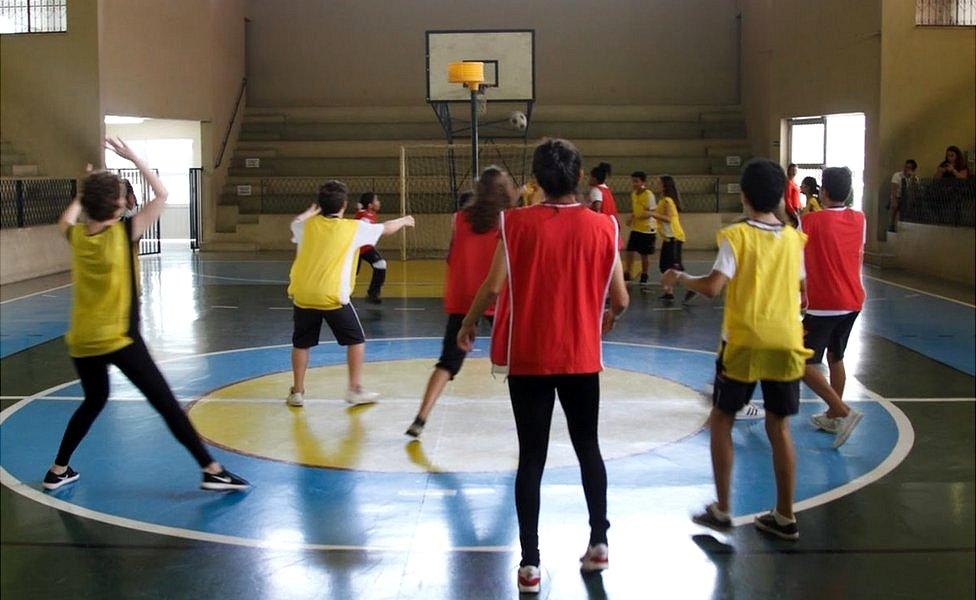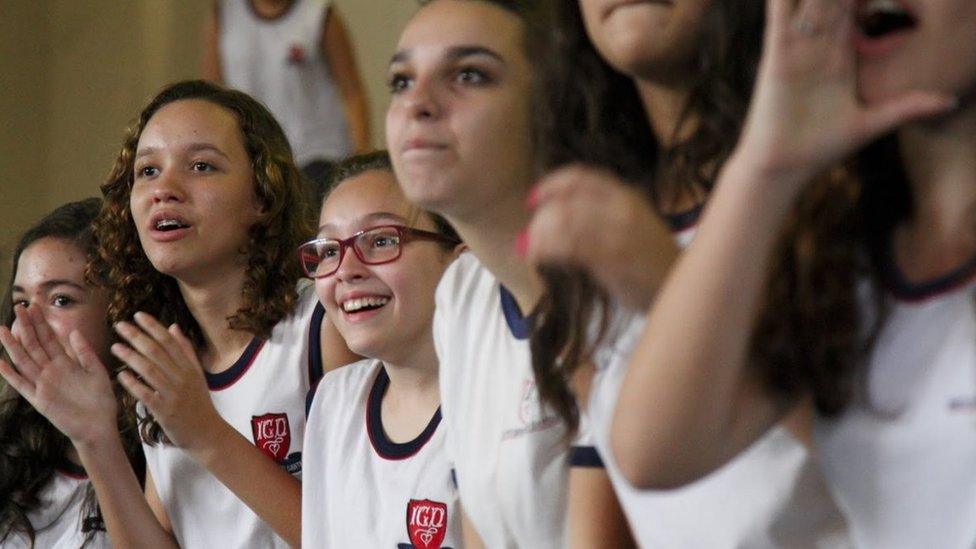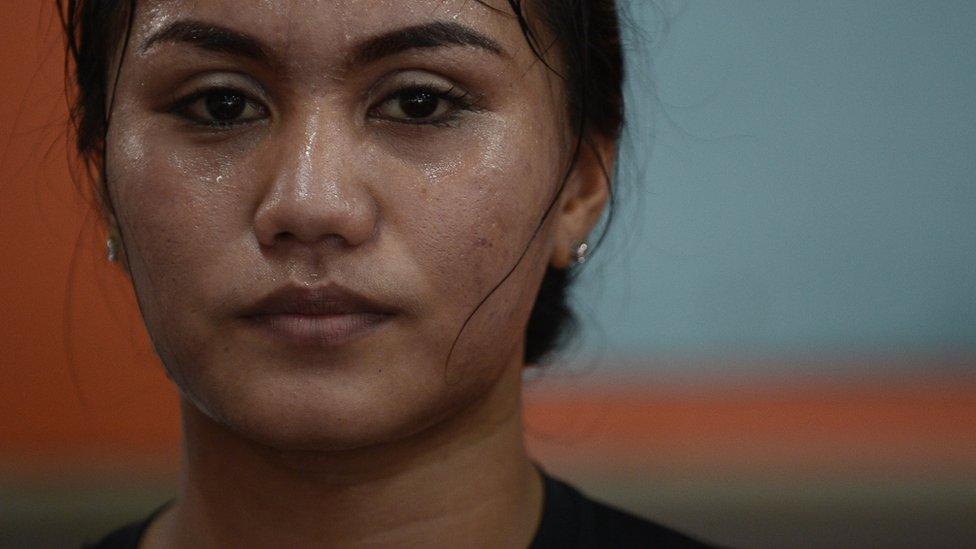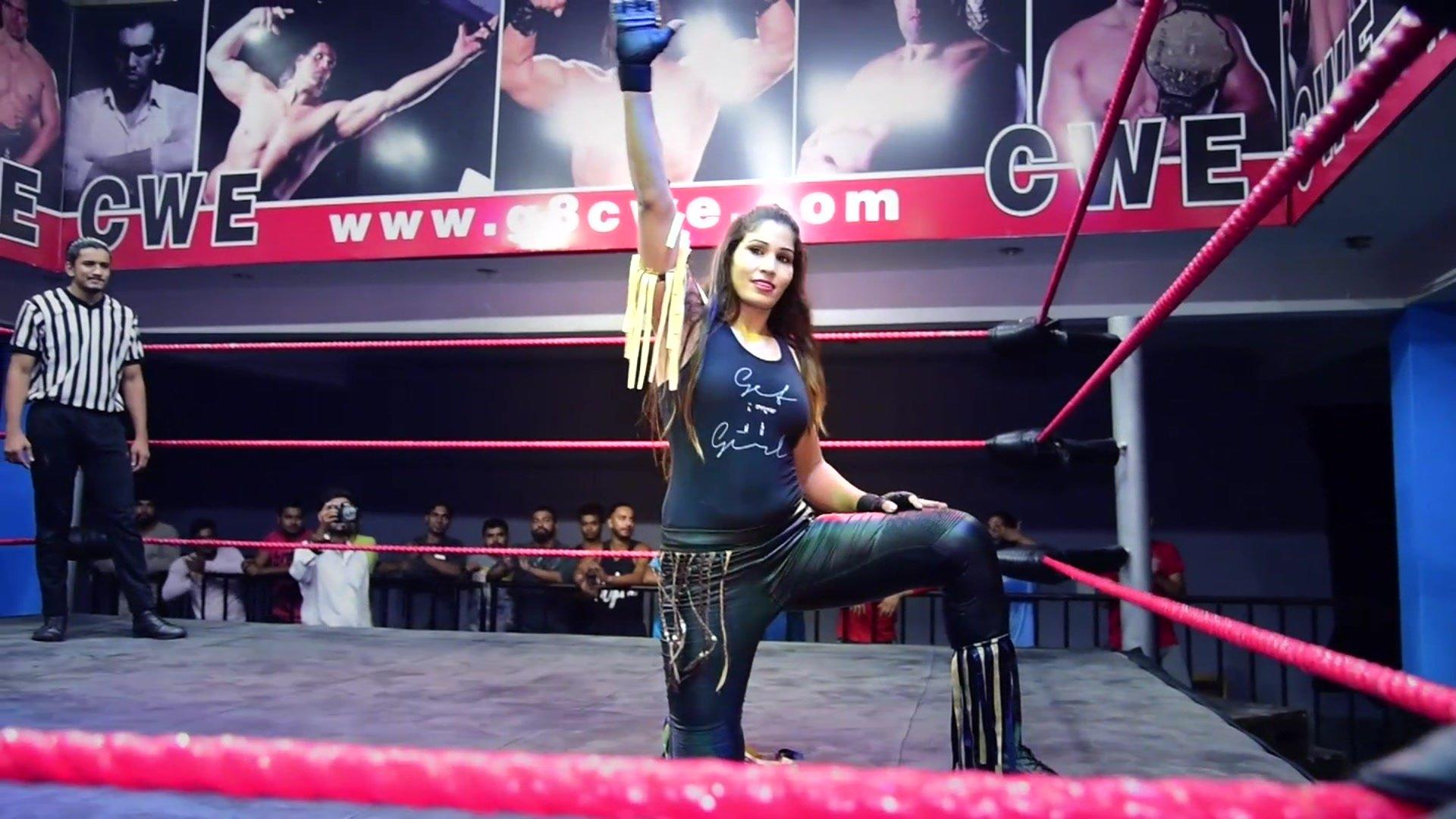100 Women: Korfball - the game to tackle sexism in sport?
- Published

Children at Instituto Geremario Dantas enjoy playing on mixed teams
It's a typical school scene - teams of children in red, green and yellow bibs playing competitive sport.
But there's one striking difference - the sport they're playing at Instituto Geremario Dantas in Rio de Janeiro is one where teams are made up of both boys and girls.
Korfball, invented at the beginning of the 20th century, is described as the only true mixed-gender ball game.
The rules of the game mean the children in this school sports hall in Brazil are encouraged to play together.
"I really like it because you can play with boys and girls," says 11-year-old Giovanni. "It's a sport that allows everyone to play - boys, girls and people with different abilities.
"We're all different and we're good at different things but in this game we can all play."
100 Women: Does sport have a problem with women?
All this week, BBC 100 Women is looking at ways to tackle sexism in sport.
From a massive gender pay gap across many disciplines, to smaller female audiences watching televised sports, to girls dropping out of physical education in school - there are many problems when it comes to getting women into sport.
But we're challenging a group of women to come up with ways of tackling this issue. Is korfball one of the answers?

The game is similar to both netball and basketball
"Korfball breaks the stereotype that boys and girls can't play together, and that women are the weaker sex," says Sheila Duarte, teacher at Instituto Geremario Dantas.
"It shows that girls can play ball games and intense sports well too."
John, 12, says he "loves" korfball. Why? "It's a game that has a lot of movement and you can play with girls," he says.
The game can be played indoors or outdoors on a court and the aim is to throw the ball through the goal, or "korf", a plastic basket on a pole 3.5m above the ground.
The Netherlands are the dominant team on the world stage, but the game is increasing in popularity around the world.


Korfball - How to play
Each team is made up of four male and four female players. The playing field is divided into two equal zones and two players of each sex are placed in each zone
They cannot move into the other zone during the match but every time two goals are scored, the players swap zones and therefore roles ("attackers" become "defenders" and vice-versa)
The sport has similarities to both netball and basketball. Players score by throwing the ball through the goal ("korf") of the opposite team
If you have the ball, you can only move one foot and can pivot on the other. You cannot dribble or run with the ball, and deliberate physical contact is prohibited
Goals can only be scored if a player gets away from a defender
Whichever team scores the most goals wins
Sources: International Korfball Federation; rulesofsport.com

Mini-korf is a scaled down version of korfball, suitable for small children, often played on the beach, while korflite is designed for players to bring friends who have never played before.
There are also versions of the game accessible for people with disabilities.
Follow live: 100 Women tackles sexism in Rio
But while the rules of korfball make it perfect for integrating boys and girls, in terms of popularity in schools, let alone as a spectator sport, it's still dwarfed by traditional sports such as football, tennis, cricket and basketball.
These are the sports that attract huge audiences, massive sponsorship deals and worldwide celebrity.


What is 100 Women?
BBC 100 Women names 100 influential and inspirational women around the world every year. In 2017, we're challenging them to tackle four of the biggest problems facing women today - the glass ceiling, female illiteracy, harassment in public spaces and sexism in sport.
With your help, they'll be coming up with real-life solutions and we want you to get involved with your ideas. Find us on Facebook, external, Instagram, external and Twitter, external and use #100Women

"I cannot think of any other industry that has such a wage gap, really," says Beatrice Frey, sport partnership manager at UN Women. "Depending on country context and sport, a man can be billionaire, and a woman [in the same discipline] cannot even get a minimum salary."
Amongst the top 100 highest-earning athletes there is just one woman - tennis ace Serena Wiliams.
And while korfball is popular with the children in this Rio school, there are limited opportunities to turn it into a career, even for the best players.

Korfball is yet to become a successful spectator sport, but it is popular here
"It's just two hours of sport," says Beatriz Vaz, a professional football player and a member of the 100 Women team looking at the issue of sexism in sport.
For her, the problem is much more deep-rooted. Systems, not just school sports, must change.
- Published23 October 2017

- Published25 October 2017

- Published24 October 2017

- Published25 October 2017
